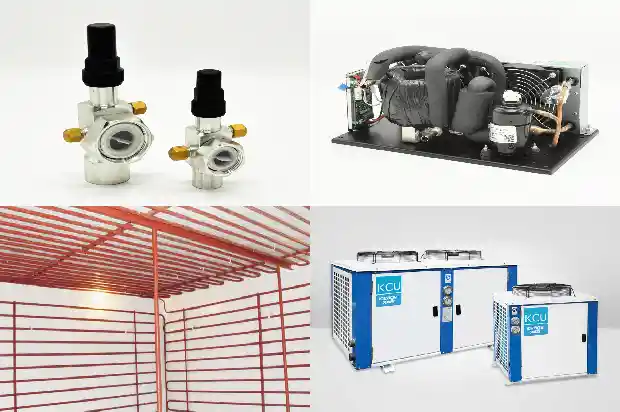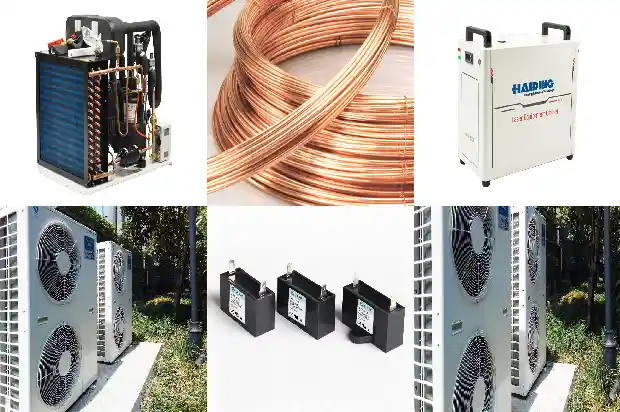Application of Economizer in Air-cooled Heat Pumps and Low-temperature Screw Compressors
2024-09-09
The economizer is also a heat exchanger. It makes another part of the refrigerant get subcooled by the refrigerant itself throttling, evaporating and absorbing heat. The economizer is often used in the refrigeration system of a two-stage intake compressor. Under the working condition with a relatively low evaporation temperature (below -25℃), because the efficiency of a common compressor at this time is reduced, the refrigerating capacity is decreased and the exhaust temperature is relatively high, adopting the economizer gas replenishing cycle can improve the efficiency of the compression refrigeration cycle, increase the refrigerating capacity and reduce the exhaust temperature of the compressor. The use of the economizer can make the compressor have a wider application range and be more economical.
The working principle and application of the economizer
The high-pressure liquid from the condenser is divided into two paths: one path passes through the throttling component for throttling and then generates a mixture of saturated gas and saturated liquid to enter the economizer (gas replenishing circuit), and the other path directly enters the economizer (main circuit); it exchanges heat with the high-pressure liquid refrigerant coming in countercurrent (the liquid refrigerant is subcooled), evaporates after absorbing heat, and the superheated vapor obtained after evaporation enters the intermediate compression stage for compression through the economizer interface of the compressor.
The high-pressure liquid from the condenser is divided into two paths: one path passes through the throttling component for throttling and then generates a mixture of saturated gas and saturated liquid to enter the economizer (gas replenishing circuit), and the other path directly enters the economizer (main circuit); it exchanges heat with the high-pressure liquid refrigerant coming in countercurrent (the liquid refrigerant is subcooled), evaporates after absorbing heat, and the superheated vapor obtained after evaporation enters the intermediate compression stage for compression through the economizer interface of the compressor.
Since the intermediate gas replenishing is carried out after the suction process, it has no influence on the suction volume. The increase in the refrigerating capacity is due to the increase in the unit refrigerating capacity. However, after the intermediate gas replenishing, the amount of gas to be compressed is increased, so the compression work is also slightly increased. The results show that the lower the evaporation temperature is, the more the refrigerating capacity of the screw compressor with an economizer is increased compared with that of a single-stage screw compressor. That is to say, the lower the evaporation temperature is selected, the greater the refrigerating capacity per unit shaft power is.
When the air-cooled heat pump unit heats in a low-temperature environment, the pressure ratio of the compressor will increase, which will further affect the volumetric efficiency of the compressor.

The single-stage screw compressor with an economizer has a large compression ratio.

After the screw compressor is added with an economizer, mainly due to the liquid subcooling in the economizer, the refrigerating capacity is increased. The effect produced by the liquid subcooling is related to the properties of the refrigerant. Under the same working condition, for those refrigerants with small specific heat capacity of liquid (that is, the saturated liquid line is steeper) and relatively small latent heat of vaporization, the effect of liquid subcooling is the best.
Under the condition that the evaporation temperature is required to be lower than -30℃ and continuous operation is required, due to reasons such as excessive internal volume ratio and high exhaust temperature of the economizer screw compressor. From the energy-saving point of view, the refrigeration cycle of the two-stage compressed screw compressor should still be adopted.
Related Articles
- What are the characteristics and application fields of cross-flow fans?
- CO2 Refrigeration Applications
- Cold and Hyperinflation: Significance and Applications
- Air - side Economizer
- Working Principle of Economizer for Refrigeration Compressor
- Influence of Fin Spacing of Evaporator in Air Cooler on Frost Formation
- Winter Approaches: How to Solve the Low High - pressure Issue of Air - cooled Condensing Units?
- What Are the Common Causes of Cold Air Blower Noise?
- How to Troubleshoot and Repair High - pressure Protection of Air - cooled Units?
- What Exactly Are the Ten Typical Malfunctions of Air Conditioners?
- What Misconceptions Should Be Avoided in Low - temperature Refrigeration System Repairs
- Practical Knowledge on Freeze Protection of Air - conditioning Equipment
- Remember! 3 Steps to Calculate Central Air - conditioner Cooling Capacity
- How to Read the High - and Low - Pressure Gauges of Refrigeration Air - conditioners?
- Analysis of Seven Reasons for Ice Formation in Computer Room Air Conditioners
- Air - conditioner Low - pressure Alarm? These Nine Common Causes
- Selection of Bypass Control Valves for Air - conditioning Water Systems
- Common Faults and Solutions of Central Air - conditioning Chiller Units
